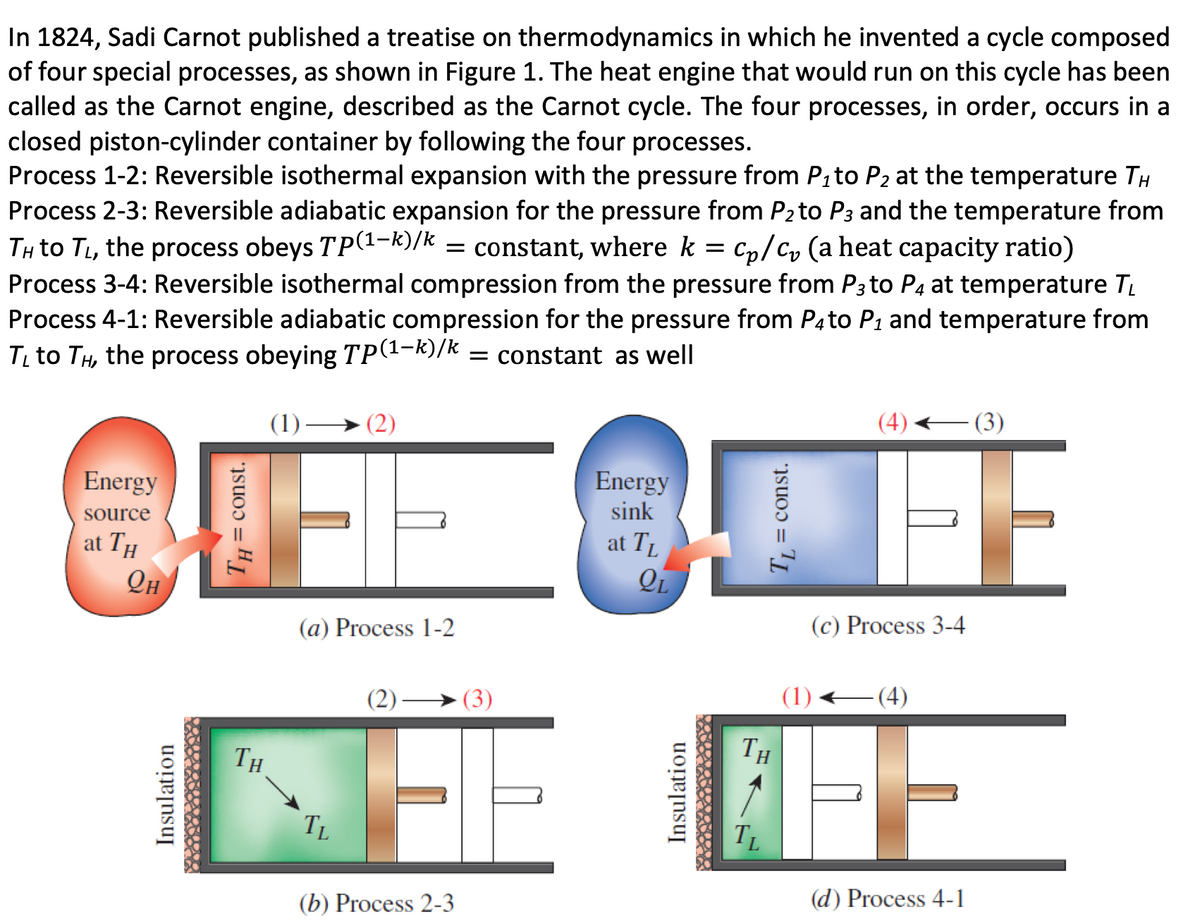Draw the T-P and T-s diagrams of the Carnot engine cycle
Refrigeration and Air Conditioning Technology (MindTap Course List)
8th Edition
ISBN:9781305578296
Author:John Tomczyk, Eugene Silberstein, Bill Whitman, Bill Johnson
Publisher:John Tomczyk, Eugene Silberstein, Bill Whitman, Bill Johnson
Chapter44: Geothermal Heat Pumps
Section: Chapter Questions
Problem 13RQ: If 14 gpm of water is flowing through an open-loop heat pump with a temperature difference of 7F,...
Related questions
Question
100%
Draw the T-P and T-s diagrams of the Carnot engine cycle

Transcribed Image Text:In 1824, Sadi Carnot published a treatise on thermodynamics in which he invented a cycle composed
of four special processes, as shown in Figure 1. The heat engine that would run on this cycle has been
called as the Carnot engine, described as the Carnot cycle. The four processes, in order, occurs in a
closed piston-cylinder container by following the four processes.
Process 1-2: Reversible isothermal expansion with the pressure from Pito P2 at the temperature TH
Process 2-3: Reversible adiabatic expansion for the pressure from P2to P3 and the temperature from
TH to TL, the process obeys TP(1-k)/k
Process 3-4: Reversible isothermal compression from the pressure from P3 to P4 at temperature TL
Process 4-1: Reversible adiabatic compression for the pressure from P4to P1 and temperature from
= constant, where k
Cp/Cy (a heat capacity ratio)
Iz to TH, the process obeying TP(1-k)/k
= constant as well
(1)
(4)
(3)
FF
Energy
Energy
source
sink
at TH
at TL
(a) Process 1-2
(c) Process 3-4
(2)
(3)
(4)
TH
TH
TL
TL
(b) Process 2-3
(d) Process 4-1
Insulation
TH = const.
Insulation
Expert Solution
This question has been solved!
Explore an expertly crafted, step-by-step solution for a thorough understanding of key concepts.
Step by step
Solved in 2 steps with 2 images

Follow-up Questions
Read through expert solutions to related follow-up questions below.
Follow-up Question
how to calculate work done for each process?
Solution
Knowledge Booster
Learn more about
Need a deep-dive on the concept behind this application? Look no further. Learn more about this topic, mechanical-engineering and related others by exploring similar questions and additional content below.Recommended textbooks for you

Refrigeration and Air Conditioning Technology (Mi…
Mechanical Engineering
ISBN:
9781305578296
Author:
John Tomczyk, Eugene Silberstein, Bill Whitman, Bill Johnson
Publisher:
Cengage Learning

Refrigeration and Air Conditioning Technology (Mi…
Mechanical Engineering
ISBN:
9781305578296
Author:
John Tomczyk, Eugene Silberstein, Bill Whitman, Bill Johnson
Publisher:
Cengage Learning